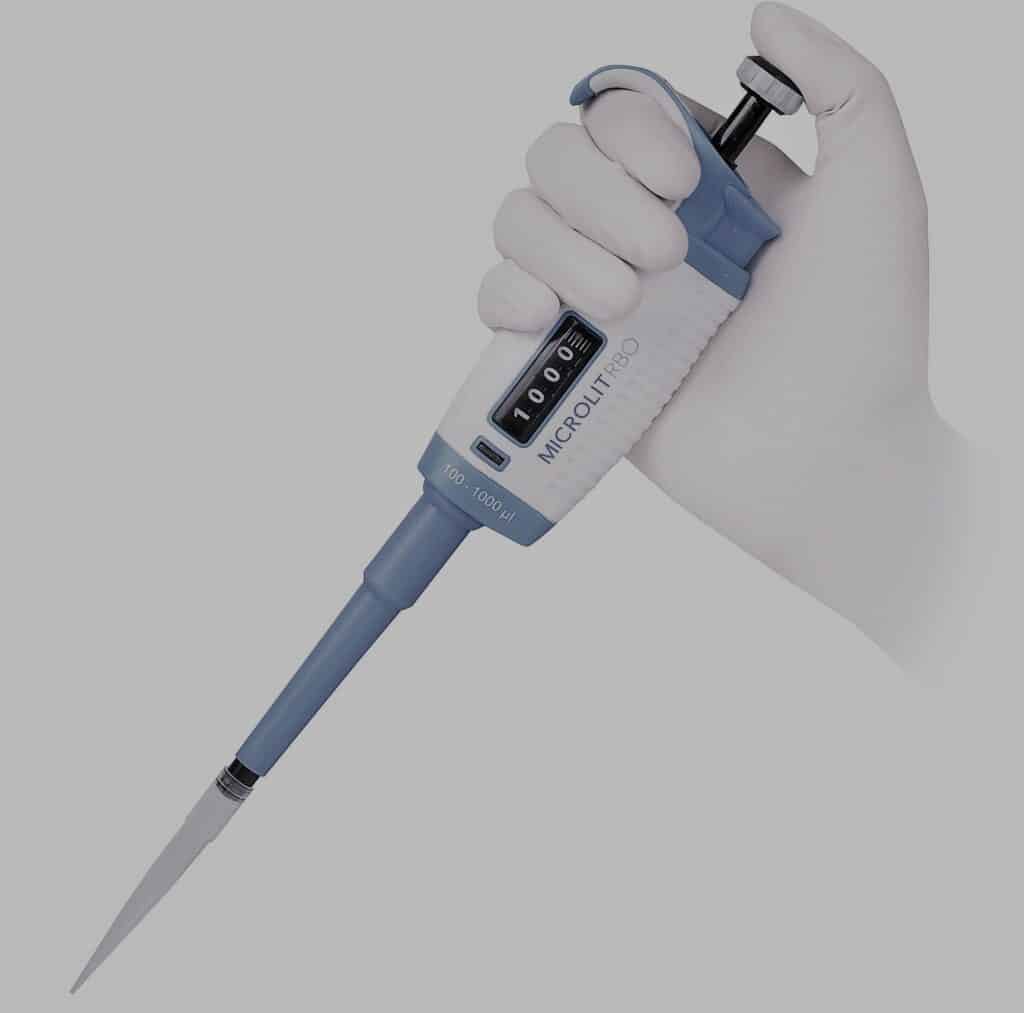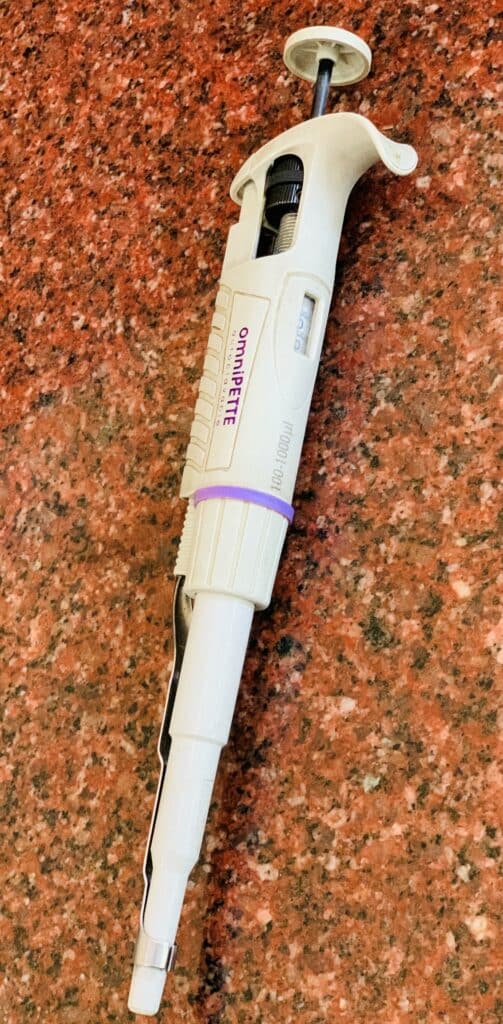Table of Contents
ToggleMicropipette is the common laboratory instrument used to measure small volumes which range from 1-1000 microlitres. From the name itself, it is clear Micro– small and pipette mean to measure something. They are found in different ranges starting from 0.1-2.5 microlitres, 1-10 microlitres, 10-100 microlitres, 1-10000 microliters, 1-20 microlitres, etc. They are used especially in microbiology, biotechnology, pharmaceuticals, pathology, etc
Micropipette
Micropipettes are instruments used to manage liquid quantities on the microliter scale, and piston-driven air displacement pipettes fall under this category. They are used more frequently in biology and biochemistry than in chemistry, and many organic solvents can damage the apparatus.
A micropipette is a typical but crucial laboratory tool used to precisely and accurately transfer liquid quantities in the microliter range. Both single-channel and multi-channel micropipettes are offered.

Principle of micropipette
Using the air displacement concept, a micropipette operates. It consists of a piston that draws and releases liquid in response to the air pocket rising and falling, respectively. The Micropipette’s internal workings are not in direct contact with the sample.
Types of micropipette
Micropipettes are found in various types, ranging from different scales.
- Air displacement micropipette
- The micropipette’s air displacement principle consists of a piston that moves an air pocket forward, backward, and up and down while aspirating and dispersing liquid samples. The pipette’s internal mechanism does not come into touch with the liquid or sample. To pull the liquid into and out of the pipette, an irreplaceable pipette tip is employed.
- Positive displacement micropipette
- These micropipettes have a piston that comes into touch with the sample or substance. A capillary and a piston (which can move within) that can directly move liquid make up the disposable tip of a positive displacement micropipette, which is a very tiny syringe.
- Mechanical micropipette
- It is operated manually by hand
- Electronic micropipette
- As an automated device, an electronic micropipette is also known as an automatic micropipette or a digital micropipette. To aspirate and dispense liquid, single-touch buttons are employed instead of manually depressing and pressing the plunger. Electronic pipettes frequently let users design unique programs for the gadget, enabling the adaption of the pipettes to different application requirements.
- Single channel micropipette
- The instrument that can be used to aspirate or disseminate the liquid is a micropipette with a single channel.
- Multichannel micropipette
- There are numerous channels on this kind of micropipette for liquid aspiration or dispersion. The 12-channel, 8-channel, and 16-channel multichannel micropipette models are the most popular. Multichannel micropipettes can do the work of a single-channel micropipette when dealing with huge amounts of material.
Varieties of range in micropipette
| Size | Range | Tip size and color |
| P 2 | 0.2 – 2 µ | Micro white |
| P 10 | 1 – 10 µ | Micro white |
| P 20 | 2 – 20 µ | Medium white |
| P 100 | 20 – 100 µ | Yellow |
| P 200 | 20 – 200 µ | Yellow |
| P 1000 | 100 – 1000 µ | Blue |
| P 5000 | 1000 – 5000 µ | White |

How to use a micropipette?
For using a micropipette, we have to follow the following simples protocol:
- We have to select the volume of our needs.
- Then the range is set up to 1000 microlitres by rotating the knob on the upper side of the pipette.
- Now, after setting the volume, the tips are attached to the pipette, and the knob is pressed up to the first stop when we have to take the sample
- Finally, when we have to release the sample we have to press up to the second stop.
- Discard the previous tips.
Micropipette tips
Pipette Tips are single-use, autoclavable accessories used with pipettes to take in and dispense liquids. Several laboratories make use of micropipettes. Pipette tips can be used in a research/diagnostic lab to distribute liquids into a well plate for PCR testing. They are an important part of micropipettes. They are found in various sizes depending on the micropipette size.

Uses of micropipette
- In mainly biochemistry lab
- for DNA isolation
- for phytochemical analysis (TPC, TFC, TTC, DPPH )assay
- For preparing buffer
- for bacteria culture
- antimicrobial assay
- in pathology
- in pharmaceuticals
MCQs/FAQs
How to measure 1mL in a micropipette?
By measuring 1000 microlitre(1000microlitre+1mL)
Price of micropipette
Recombigen Plastic Imported Variable Micropipette, For clinical or pathology lab. ₹ 1,900 ·
References
https://www.scienceequip.com.au/blogs/news/what-are-micropipettes-and-their-different-types









